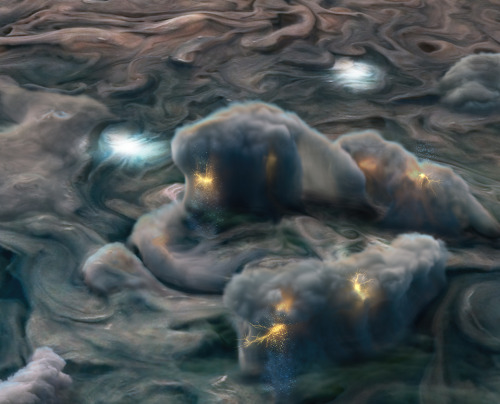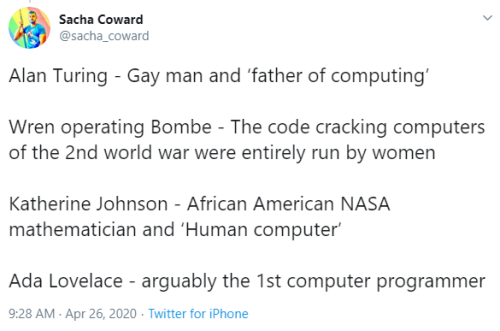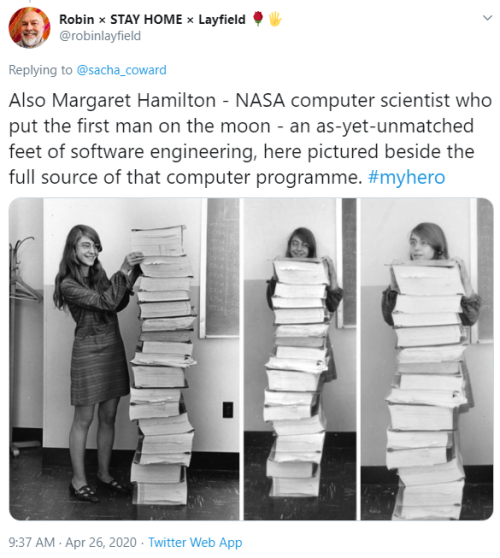Our Universe Is FULL Of Strange And Surprising Things.

Our universe is FULL of strange and surprising things.
And luckily, our Hubble Space Telescope is there to be our window to the unimaginable! Hubble recently ran into an issue with its payload computer which controls and coordinates science instruments onboard the spacecraft. On July 16, teams successfully switched to backup hardware to compensate for the problem! A day later, the telescope resumed normal science operations. To celebrate, we’re taking you back to 2016 when our dear Hubble captured perhaps one of the most intriguing objects in our Milky Way galaxy: a massive star trapped inside a bubble! The star inside this Bubble Nebula burns a million times brighter than our Sun and produces powerful gaseous outflows that howl at more than four million miles per hour. Based on the rate the star is expending energy, scientists estimate in 10 to 20 million years it will explode as a supernova. And the bubble will succumb to a common fate: It’ll pop.
More Posts from Science-child and Others
When Dead Stars Collide!
Gravity has been making waves - literally. Earlier this month, the Nobel Prize in Physics was awarded for the first direct detection of gravitational waves two years ago. But astronomers just announced another huge advance in the field of gravitational waves - for the first time, we’ve observed light and gravitational waves from the same source.

There was a pair of orbiting neutron stars in a galaxy (called NGC 4993). Neutron stars are the crushed leftover cores of massive stars (stars more than 8 times the mass of our sun) that long ago exploded as supernovas. There are many such pairs of binaries in this galaxy, and in all the galaxies we can see, but something special was about to happen to this particular pair.

Each time these neutron stars orbited, they would lose a teeny bit of gravitational energy to gravitational waves. Gravitational waves are disturbances in space-time - the very fabric of the universe - that travel at the speed of light. The waves are emitted by any mass that is changing speed or direction, like this pair of orbiting neutron stars. However, the gravitational waves are very faint unless the neutron stars are very close and orbiting around each other very fast.

As luck would have it, the teeny energy loss caused the two neutron stars to get a teeny bit closer to each other and orbit a teeny bit faster. After hundreds of millions of years, all those teeny bits added up, and the neutron stars were *very* close. So close that … BOOM! … they collided. And we witnessed it on Earth on August 17, 2017.

Credit: National Science Foundation/LIGO/Sonoma State University/A. Simonnet
A couple of very cool things happened in that collision - and we expect they happen in all such neutron star collisions. Just before the neutron stars collided, the gravitational waves were strong enough and at just the right frequency that the National Science Foundation (NSF)’s Laser Interferometer Gravitational-Wave Observatory (LIGO) and European Gravitational Observatory’s Virgo could detect them. Just after the collision, those waves quickly faded out because there are no longer two things orbiting around each other!
LIGO is a ground-based detector waiting for gravitational waves to pass through its facilities on Earth. When it is active, it can detect them from almost anywhere in space.

The other thing that happened was what we call a gamma-ray burst. When they get very close, the neutron stars break apart and create a spectacular, but short, explosion. For a couple of seconds, our Fermi Gamma-ray Telescope saw gamma-rays from that explosion. Fermi’s Gamma-ray Burst Monitor is one of our eyes on the sky, looking out for such bursts of gamma-rays that scientists want to catch as soon as they’re happening.
And those gamma-rays came just 1.7 seconds after the gravitational wave signal. The galaxy this occurred in is 130 million light-years away, so the light and gravitational waves were traveling for 130 million years before we detected them.

After that initial burst of gamma-rays, the debris from the explosion continued to glow, fading as it expanded outward. Our Swift, Hubble, Chandra and Spitzer telescopes, along with a number of ground-based observers, were poised to look at this afterglow from the explosion in ultraviolet, optical, X-ray and infrared light. Such coordination between satellites is something that we’ve been doing with our international partners for decades, so we catch events like this one as quickly as possible and in as many wavelengths as possible.

Astronomers have thought that neutron star mergers were the cause of one type of gamma-ray burst - a short gamma-ray burst, like the one they observed on August 17. It wasn’t until we could combine the data from our satellites with the information from LIGO/Virgo that we could confirm this directly.

This event begins a new chapter in astronomy. For centuries, light was the only way we could learn about our universe. Now, we’ve opened up a whole new window into the study of neutron stars and black holes. This means we can see things we could not detect before.

The first LIGO detection was of a pair of merging black holes. Mergers like that may be happening as often as once a month across the universe, but they do not produce much light because there’s little to nothing left around the black hole to emit light. In that case, gravitational waves were the only way to detect the merger.

Image Credit: LIGO/Caltech/MIT/Sonoma State (Aurore Simonnet)
The neutron star merger, though, has plenty of material to emit light. By combining different kinds of light with gravitational waves, we are learning how matter behaves in the most extreme environments. We are learning more about how the gravitational wave information fits with what we already know from light - and in the process we’re solving some long-standing mysteries!
Want to know more? Get more information HERE.
Make sure to follow us on Tumblr for your regular dose of space: http://nasa.tumblr.com
Hubble’s Guide to Viewing Deep Fields
They say a picture is worth a thousand words, but no images have left a greater impact on our understanding of the universe quite like the Hubble Space Telescope’s deep fields. Like time machines, these iconic images transport humanity billions of light-years back in time, offering a glimpse into the early universe and insight into galaxy evolution!

You’ve probably seen these images before, but what exactly do we see within them? Deep field images are basically core samples of our universe. By peering into a small portion of the night sky, we embark on a journey through space and time as thousands of galaxies appear before our very eyes.
So, how can a telescope the size of a school bus orbiting 340 miles above Earth uncover these mind-boggling galactic masterpieces? We’re here to break it down. Here’s Hubble’s step-by-step guide to viewing deep fields:
Step 1: Aim at the darkness
Believe it or not, capturing the light of a thousand galaxies actually begins in the dark. To observe extremely faint galaxies in the farthest corners of the cosmos, we need minimal light interference from nearby stars and other celestial objects. The key is to point Hubble’s camera at a dark patch of sky, away from the outer-edge glow of our own galaxy and removed from the path of our planet, the Sun, or the Moon. This “empty” black canvas of space will eventually transform into a stunning cosmic mosaic of galaxies.

The first deep field image was captured in 1995. In order to see far beyond nearby galaxies, Hubble’s camera focused on a relatively empty patch of sky within the constellation Ursa Major. The results were this step-shaped image, an extraordinary display of nearly 3,000 galaxies spread across billions of light-years, featuring some of the earliest galaxies to emerge shortly after the big bang.
Step 2: Take it all in
The universe is vast, and peering back billions of years takes time. Compared to Hubble’s typical exposure time of a few hours, deep fields can require hundreds of hours of exposure over several days. Patience is key. Capturing and combining several separate exposures allows astronomers to assemble a comprehensive core slice of our universe, providing key information about galaxy formation and evolution. Plus, by combining exposures from different wavelengths of light, astronomers are able to better understand galaxy distances, ages, and compositions.

The Hubble Ultra Deep Field is the deepest visible-light portrait of our universe. This astonishing display of nearly 10,000 galaxies was imaged over the course of 400 Hubble orbits around Earth, with a total of 800 exposures captured over 11.3 days.
Step 3: Go beyond what’s visible
The ability to see across billions of light-years and observe the farthest known galaxies in our universe requires access to wavelengths beyond those visible to the human eye. The universe is expanding and light from distant galaxies is stretched far across space, taking a long time to reach us here on Earth. This phenomenon, known as “redshift,” causes longer wavelengths of light to appear redder the farther they have to travel through space. Far enough away, and the wavelengths will be stretched into infrared light. This is where Hubble’s infrared vision comes in handy. Infrared light allows us to observe light from some of the earliest galaxies in our universe and better understand the history of galaxy formation over time.

In 2009, Hubble observed the Ultra Deep Field in the infrared. Using the Near Infrared Camera and Multi-Object Spectrometer, astronomers gathered one of the deepest core samples of our universe and captured some of the most distant galaxies ever observed.
Step 4: Use your time machine
Apart from their remarkable beauty and impressive imagery, deep field images are packed with information, offering astronomers a cosmic history lesson billions of years back in time within a single portrait. Since light from distant galaxies takes time to reach us, these images allow astronomers to travel through time and observe these galaxies as they appear at various stages in their development. By observing Hubble’s deep field images, we can begin to discover the questions we’ve yet to ask about our universe.

Credit: NASA, ESA, R. Bouwens and G. Illingworth (University of California, Santa Cruz)
Hubble’s deep field images observe galaxies that emerged as far back as the big bang. This image of the Hubble Ultra Deep Field showcases 28 of over 500 early galaxies from when the universe was less than one billion years old. The light from these galaxies represent different stages in their evolution as their light travels through space to reach us.
Step 5: Expand the cosmic frontier
Hubble’s deep fields have opened a window to a small portion of our vast universe, and future space missions will take this deep field legacy even further. With advancements in technologies and scientific instruments, we will soon have the ability to further uncover the unimaginable.


Slated for launch in late 2021, NASA’s James Webb Space Telescope will offer a new lens to our universe with its impressive infrared capabilities. Relying largely on the telescope’s mid-infrared instrument, Webb will further study portions of the Hubble deep field images in greater detail, pushing the boundaries of the cosmic frontier even further.
And there you have it, Hubble’s guide to unlocking the secrets of the cosmos! To this day, deep field images remain fundamental building blocks for studying galaxy formation and deepening not only our understanding of the universe, but our place within it as well.
Still curious about Hubble Deep Fields? Explore more and follow along on Twitter, Facebook, and Instagram with #DeepFieldWeek!
Make sure to follow us on Tumblr for your regular dose of space!
"I used to measure the heavens; now I shall measure the shadows of the earth. Although my soul was from heaven, the shadow of my body lies here."
-Johannes Kepler-

New results from our Juno mission suggest the planet is home to “shallow lightning.” An unexpected form of electrical discharge, shallow lightning comes from a unique ammonia-water solution.
It was previously thought that lightning on Jupiter was similar to Earth, forming only in thunderstorms where water exists in all its phases – ice, liquid, and gas. But flashes observed at altitudes too cold for pure liquid water to exist told a different story. This illustration uses data obtained by the mission to show what these high-altitude electrical storms look like.
Understanding the inner workings of Jupiter allows us to develop theories about atmospheres on other planets and exoplanets!
Illustration Credit: NASA/JPL-Caltech/SwRI/MSSS/Gerald Eichstädt/Heidi N. Becker/Koji Kuramura
Make sure to follow us on Tumblr for your regular dose of space: http://nasa.tumblr.com
Roman’s Five-Year Forecast: A Downpour of Data!
Our Nancy Grace Roman Space Telescope recently passed a major review of the ground system, which will make data from the spacecraft available to scientists and the public.
Since the telescope has a gigantic field of view, it will be able to send us tons of data really quickly — about 500 times faster than our Hubble Space Telescope! That means Roman will send back a flood of new information about the cosmos.

Let’s put it into perspective — if we printed out all of Roman’s data as text, the paper would have to hurtle out of the printer at 40,000 miles per hour (64,000 kilometers per hour) to keep up! At that rate, the stack of papers would tower 330 miles (530 kilometers) high after a single day. By the end of Roman’s five-year primary mission, the stack would extend even farther than the Moon! With all this data, Roman will bring all kinds of cosmic treasures to light, from dark matter and dark energy to distant planets and more!
Learn more about the Roman Space Telescope.
Make sure to follow us on Tumblr for your regular dose of space!
A small question:
Would anybody want me to do lessons? Like if you send in an ask like 'Hey, what do you know abt *science topic*?' I could do some research and make it a post with links and videos? (Like my Gravitational Waves in the Space-Time Continuum post [link below, and pinned to my acct])

Would anybody send in asks???




“I always remember having this fight with a random dude who claimed that ‘straight white men’ were the only true innovators. His prime example for this was the computer… the computer… THE COMPUTER!!! THE COM-PU-TER!!!
Alan Turing - Gay man and ‘father of computing’ Wren operating Bombe - The code cracking computers of the 2nd world war were entirely run by women Katherine Johnson - African American NASA mathematician and ‘Human computer’ Ada Lovelace - arguably the 1st computer programmer”
- Sacha Coward
Also Margaret Hamilton - NASA computer scientist who put the first man on the moon - an as-yet-unmatched feet of software engineering, here pictured beside the full source of that computer programme. #myhero
Grace Hopper - the woman that coined the term “bug”
- @robinlayfield
-
 iwannarunaway-13 liked this · 1 month ago
iwannarunaway-13 liked this · 1 month ago -
 anna22ya6 liked this · 6 months ago
anna22ya6 liked this · 6 months ago -
 flowerzbloozworld reblogged this · 10 months ago
flowerzbloozworld reblogged this · 10 months ago -
 flowerzbloozworld liked this · 10 months ago
flowerzbloozworld liked this · 10 months ago -
 pineapplevhead reblogged this · 11 months ago
pineapplevhead reblogged this · 11 months ago -
 huntressvamp reblogged this · 1 year ago
huntressvamp reblogged this · 1 year ago -
 thesaltoforion reblogged this · 1 year ago
thesaltoforion reblogged this · 1 year ago -
 ravexandxlust liked this · 1 year ago
ravexandxlust liked this · 1 year ago -
 poppakilo liked this · 1 year ago
poppakilo liked this · 1 year ago -
 neasparamanf liked this · 1 year ago
neasparamanf liked this · 1 year ago -
 ramemotel liked this · 1 year ago
ramemotel liked this · 1 year ago -
 chrisufonhe liked this · 1 year ago
chrisufonhe liked this · 1 year ago -
 cbsblog liked this · 1 year ago
cbsblog liked this · 1 year ago -
 unabashedmoonhideout6969 liked this · 1 year ago
unabashedmoonhideout6969 liked this · 1 year ago -
 phomeabc123 liked this · 1 year ago
phomeabc123 liked this · 1 year ago -
 osiriscantu reblogged this · 1 year ago
osiriscantu reblogged this · 1 year ago -
 osiriscantu liked this · 1 year ago
osiriscantu liked this · 1 year ago -
 penguin345 liked this · 1 year ago
penguin345 liked this · 1 year ago -
 criminallyloud reblogged this · 2 years ago
criminallyloud reblogged this · 2 years ago -
 criminallyloud liked this · 2 years ago
criminallyloud liked this · 2 years ago -
 mitsukenaide-mitsumenaide liked this · 2 years ago
mitsukenaide-mitsumenaide liked this · 2 years ago -
 revans liked this · 2 years ago
revans liked this · 2 years ago -
 lazygizka reblogged this · 2 years ago
lazygizka reblogged this · 2 years ago -
 athousandlayersoftulle liked this · 2 years ago
athousandlayersoftulle liked this · 2 years ago -
 madafakaxel liked this · 2 years ago
madafakaxel liked this · 2 years ago -
 pseuglam reblogged this · 2 years ago
pseuglam reblogged this · 2 years ago -
 jmintulip liked this · 2 years ago
jmintulip liked this · 2 years ago -
 fiercelyaries liked this · 2 years ago
fiercelyaries liked this · 2 years ago -
 ricardonm liked this · 2 years ago
ricardonm liked this · 2 years ago -
 notyams liked this · 2 years ago
notyams liked this · 2 years ago -
 peculiarpinkpig liked this · 2 years ago
peculiarpinkpig liked this · 2 years ago -
 vampgurll01 liked this · 2 years ago
vampgurll01 liked this · 2 years ago -
 lushbrat85 liked this · 2 years ago
lushbrat85 liked this · 2 years ago -
 dreamerinstarsandspaces liked this · 2 years ago
dreamerinstarsandspaces liked this · 2 years ago -
 queer-trashmouth liked this · 2 years ago
queer-trashmouth liked this · 2 years ago -
 souless6 liked this · 2 years ago
souless6 liked this · 2 years ago -
 theladysnight liked this · 2 years ago
theladysnight liked this · 2 years ago -
 tunisianstar reblogged this · 2 years ago
tunisianstar reblogged this · 2 years ago

